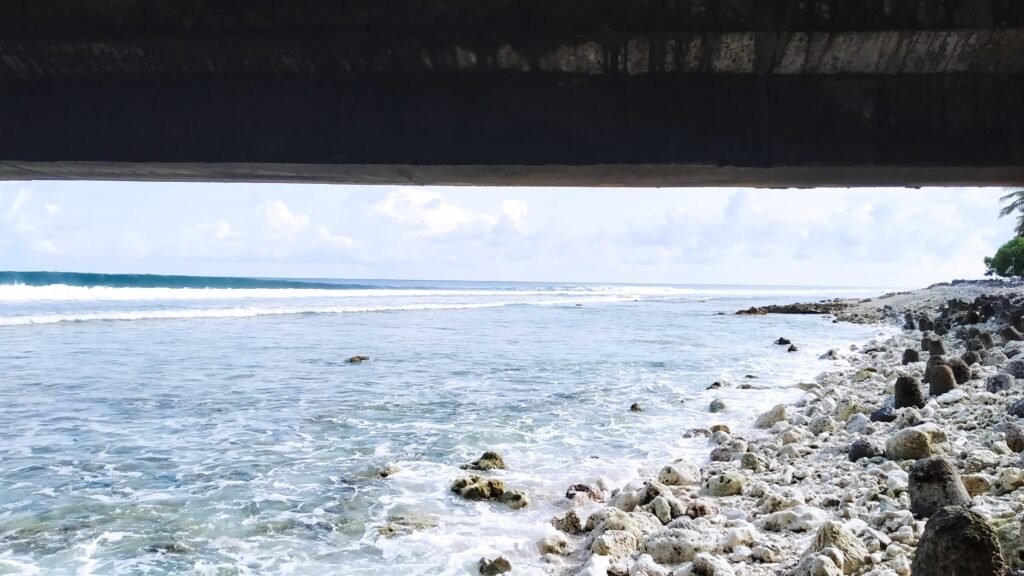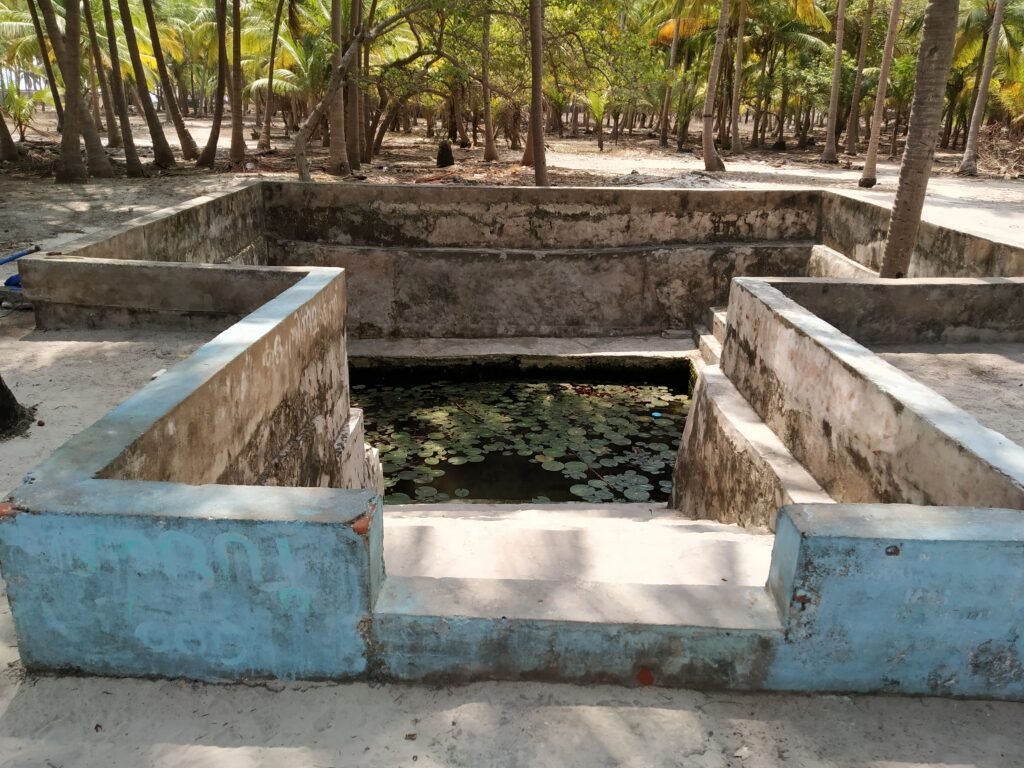By Rajeswari BT
Originally published in Malayalam by Belaram.com on February 22, 2025

The islands of Lakshadweep now exist on stable sand essentially created over centuries by a mix of coral rubble and organic matter which have made the land suitable for plant life and human habitation.
When we look at the islands of Lakshadweep today, it is easy to forget the incredible journey that shaped them. These islands, now home to thriving communities, are the result of millions of years of dramatic natural processes.
Scientists believe that when the Earth first formed, all landmasses were part of a single supercontinent. Over time, due to tectonic shifts and geological changes, these landmasses began to drift apart. Around 66 million years ago, a volcanic hotspot near modern-day Africa, known as the Réunion Hotspot, played a crucial role in shaping what we now know as the Indian subcontinent and surrounding oceanic landscapes.
As the Indian tectonic plate slowly broke away from Africa and moved northward toward Asia, it passed over this hotspot. The intense volcanic activity led to massive lava flows, creating underwater mountains and ridges across the Indian Ocean. Eventually, the Indian plate collided with Asia, giving rise to the Himalayas, while the remnants of these underwater volcanic mountains remained scattered between Africa and India. Over time, many of these submerged mountains became the foundation for what are today’s island chains: the Chagos Archipelago, the Maldives, the Lakshadweep Islands, and Réunion Island.

The three stages of coral atoll formation: (1) fringing reef development around a volcanic island, (2) barrier reef formation as the island subsides, and (3) the final atoll stage with a central lagoon after complete submergence of the original volcanic island.
PC: Encyclopedia Britannica
As centuries passed, these volcanic seamounts began to sink deeper under the ocean due to changes in sea level and tectonic activity. Meanwhile, tiny marine organisms which we know as corals began growing on their slopes and summits, inching upward toward sunlight. Coral polyps, along with symbiotic algae that live within them, built massive reef structures over millennia. When corals die, their calcium-rich skeletons accumulate, compact, and gradually form the very sand and soil we see on our islands today.
Most of the land we walk on in Lakshadweep is, in fact, made up of crushed coral remains and fragments of marine organisms. If you closely examine the sand during an evening stroll along the beach, you can still see traces of these tiny lifeforms.

A detailed illustration of atoll formation showing how an underwater volcano pierces the ocean surface, develops a coral reef ecosystem, and eventually creates a protective barrier reef as the volcanic island subsides, forming the characteristic atoll structure.
PC: USGS & Wikimedia Commons
Before we go further, what exactly are coral reefs?
Corals are fascinating creatures: they are both animal and, in some sense, plant. Structurally, they consist of three key parts:
- A hard external skeleton,
- Tiny marine animals called polyps that create and live within that skeleton,
- Microscopic algae (zooxanthellae) that live inside the polyps and give corals their color.
Over hundreds of thousands of years, these coral organisms build walls (reef barriers) that play a crucial role in protecting the islands. These reefs absorb the force of incoming waves, keeping the lagoon waters calm. The flat, walkable areas on the edge of the reef that people use during low tide are built entirely of compacted coral matter.
Coral reefs like these are not unique to Lakshadweep. Similar structures exist in tropical waters across the globe and are home to diverse marine life. This vibrant ecosystem, in turn, helps coral reefs thrive, making them among the most biologically rich environments on the planet.
Corals are ancient, long-lived organisms, and their cycles of growth, death, and transformation take centuries. Dead coral fragments, pushed and shaped by wind and waves, gather over time and form the basis of island landforms. The southwest monsoon winds have played a huge role in shaping the islands into what we see today. At one point, all islands may have resembled Pitti Island, the tiny bird-nesting islet northwest of Kavaratti that is just a flat stretch of white sand with no vegetation.

This scene from under the Kavaratti jetty shows the dead coral rubble accumulated around the artificially inserted tetrapods. Most of the land we walk on in Lakshadweep is derived from this rubble.
Eventually, organic matter mixed with the sand, and gradual chemical changes made the land suitable for plant life. At first, only salt-tolerant plants grew in the slightly brackish rainwater that accumulated. Over time, as more sand and organic debris settled and coral walls strengthened, the land became more stable. This led to the formation of freshwater lenses beneath the surface – layers of rainwater trapped within the soil – which still supply drinking water to islanders today via wells.

A well on Kadmat island which traps freshwater and acts as a critical resource for islanders.
So, in many ways, these islands are still growing. As coral dies and organic material builds up, more land slowly forms. Some islands, like Androth and Amini, have fully matured, meaning the reef wall has been completely overtaken by land, which is why they lack surrounding lagoons.
The formation and continued existence of the Lakshadweep islands are deeply tied to the interconnected lives of countless organisms. From coral polyps and algae to fish, bārana (coral reef), billam (lagoons), and the vital kokka (sea cucumbers), each plays a role in maintaining balance.
There still remains, and will remain, a lot more to explore about each creature, each process, and each quiet transformation that has shaped these islands.

well explained